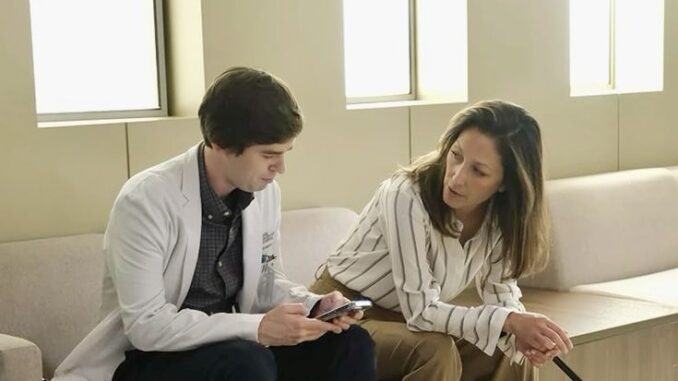
There are shows that entertain, shows that inform, and then there are shows that gently reach into your chest, squeeze your heart, and leave a lasting imprint. The Good Doctor is that kind of show. It’s not just a medical drama—it’s a profound reflection of the human condition, wrapped in white coats and surgical masks. At its center stands Dr. Shaun Murphy, a character who, despite all odds, teaches us how to listen more, judge less, and truly see one another.
In a society where being different is often misunderstood, The Good Doctor extends a hand to those who feel unseen. Dr. Shaun Murphy, a brilliant young surgeon with autism and savant syndrome, is not the kind of hero television usually celebrates. He doesn’t storm into scenes with confidence or deliver witty one-liners. Instead, he fumbles through social cues, stammers in moments of anxiety, and grapples with expressing emotions. Yet it’s this very vulnerability—portrayed with rare authenticity by Freddie Highmore—that makes him unforgettable.
Through Shaun’s eyes, we experience the world in a new way. His heightened perception allows him to see patterns others miss, to solve medical puzzles that stump even the most experienced doctors. But more importantly, we see how deeply he feels—his heartbreaks, his triumphs, his yearning to connect. The show doesn’t ask you to pity him; it invites you to walk beside him.

One of the most remarkable things about The Good Doctor is its commitment to empathy. In every episode, viewers are reminded that intelligence comes in many forms, that communication isn’t always verbal, and that connection requires more than just words—it requires patience, understanding, and compassion. This is not just a lesson for the characters in the hospital. It’s a lesson for all of us.
Each supporting character represents a different facet of humanity’s struggle to understand one another. Dr. Aaron Glassman, Shaun’s mentor and father figure, grapples with the tension between protecting Shaun and empowering him. Dr. Audrey Lim, Dr. Morgan Reznick, and Dr. Alex Park each bring their own biases, their own growth arcs. Some begin the show skeptical of Shaun’s ability to function in a high-pressure environment. Others fear the complications his differences may bring. But across the seasons, walls come down. Eyes open. Hearts shift.
That’s the beauty of The Good Doctor: it challenges both its characters and its audience to grow. To ask better questions. To listen more intently. To reconsider long-held assumptions. And in doing so, the show creates a ripple effect that goes far beyond the screen.
It’s not unusual for fans to share stories of how the show changed their lives. Parents of children on the autism spectrum write letters thanking Freddie Highmore and the show’s creators for a portrayal that finally feels accurate, respectful, and hopeful. Teachers report using episodes as educational tools in classrooms. Even doctors have expressed how the show reshaped their approach to patient care. Because The Good Doctor doesn’t just show us what it’s like to be Shaun—it shows us what it means to be human.
And Freddie Highmore’s performance is the glue holding it all together. His portrayal is not exaggerated or romanticized. He captures the small, painful moments: the way Shaun rocks slightly when overwhelmed, the effort it takes to maintain eye contact, the panic that rises when routines are disrupted. At the same time, he captures Shaun’s joy—his love for medicine, his pride in saving lives, his delight in learning to navigate relationships. It’s a role that demands vulnerability, precision, and an enormous emotional range—and Freddie delivers, episode after episode, with stunning grace.
But beyond the performance, the writing of the show deserves its own applause. The Good Doctor doesn’t shy away from difficult topics. It tackles grief, racism, healthcare inequality, and workplace bias. It doesn’t offer neat conclusions or moral platitudes. Instead, it gives viewers something rare in television: honesty. Honest conflict. Honest struggle. Honest growth.
Even visually, the show is crafted with care. The hospital doesn’t just feel like a place of work—it feels alive. The lighting reflects the mood of the moment. The camera lingers on Shaun’s hands when he’s overwhelmed, or focuses on his eyes when he’s trying to hold back tears. The sound design subtly incorporates sensory overload when Shaun is anxious, helping viewers physically feel what he’s experiencing. These details turn the series from a simple drama into a full-bodied emotional experience.
